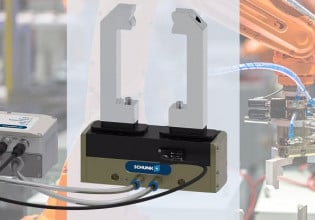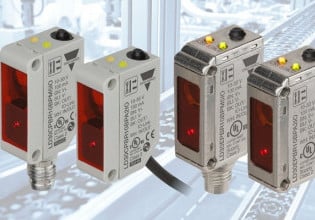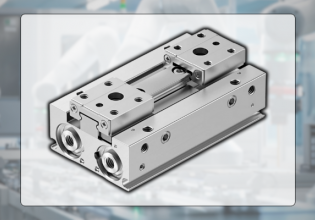Examples of Analog Signals in Control Systems
Many articles address the wiring and implementation of analog control signals, but where are they used, and what might make them a better (or perhaps worse) decision than digital input/output devices?
Analog signals serve as the bridge between the physical world and the digital domain. While digital signals have gained prominence in modern computing, analog signals continue to play a crucial role in various control applications. For an in-depth discussion of digital controls, see our article on digital signals in control systems. In this article, we will explore the concept of analog signals and their characteristics, and discuss their significance in control systems.
Understanding Analog Signals
An analog signal is a continuous representation of information that varies smoothly over time. It can take any value within a continuous range and is typically represented as a continuous wave. Analog signals reflect the real-world phenomena they represent, preserving all the nuances of the original source.

Figure 1. Analog controls allow for continuous signal sensing or output control. An example would be a temp sensor that outputs a milliamp value based on the temperature.
Characteristics of Analog Values
- Continuity: Analog signals are continuous in nature, meaning they have an infinite number of possible values within their range.
- Amplitude and Frequency: The amplitude of an analog signal represents the magnitude or intensity of the measured quantity, while the frequency corresponds to the rate at which the signal oscillates.
- Noise Susceptibility: Analog signals are susceptible to noise, interference, and degradation during transmission and processing. Factors such as electrical noise, signal attenuation, and distortion can introduce errors and affect the accuracy of the signal.
Advantages and Disadvantages of Analog Signals
Analog signals offer a variety of advantages, making them the top choice for numerous applications. Analog signals provide high resolution and precision due to their continuous nature. They can represent small changes and fine-grained information about measured quantities. They also enable real-time monitoring and control, allowing systems to quickly respond to system parameter adjustments. Additionally, analog signals provide a sensible representation of the data they measure, giving engineers and technicians intuitive data to interpret. Although analog control used to be more expensive to implement, the costs and sensing speed limitations are lower than ever.
With the advantages of analog controls in mind, there are still a few reasons why they have limited availability for inputs and outputs in programmable logic controllers PLCs. For instance, many control applications with digital signals simply now dominate the market. Digital signals are sufficient for on/off control and logic-based decision-making, which is the very foundation of PLC technology. Digital signals remain easier to test and troubleshoot for most engineers and technicians.

Figure 2. Side-by-side comparison illustrates the relative simplicity of isolated digital wiring (left side) against a far more intimidating analog diagram (right side). Image (modified) used courtesy of Automation Direct
Modern PLCs are designed to be flexible and modular. Digital control modules can cater to a broad range of applications and be easily configured to the number of inputs and outputs needed. Analog signals, on the other hand, often are too specific (such as certain current ranges, or designed for RTDs only, things like that), limiting their use to certain inflexible applications.
Applications of Analog Signals in Control Systems
Certain industries are more likely to rely on analog information due to the nature of their processes and the types of measurements required. Here are a few industries that commonly rely on analog information:
Sensing and Measurement
Analog signals are extensively used in control systems for sensing and measurement purposes. Sensors such as temperature sensors, pressure sensors, level sensors, and position sensors generate analog signals that provide continuous and precise information about the physical parameters being measured.
Proportional Control
Analog signals are crucial in implementing proportional control systems, where the output control signal is directly proportional to the input signal. For example, in a heating system, an analog temperature sensor generates an analog signal that is compared to a desired setpoint, and the output control signal is adjusted proportionally to achieve the desired temperature.
Feedback Control
Analog signals are employed in feedback control systems, where the output signal is continuously compared to the desired setpoint. Analog feedback signals allow for continuous monitoring and adjustment of system variables to maintain stability, accuracy, and desired performance.
Variable Speed Drives
Analog signals are utilized in variable-speed drive systems to control the speed and torque of electric motors. By modulating the analog control signal, the motor's performance can be adjusted smoothly, enabling precise control over various industrial processes.
Manufacturing and Industrial Automation
Industries involved in manufacturing, assembly lines, robotics, and machine automation often require precise control over physical variables. Analog signals are used for feedback control, proportional control, and regulating various processes.
Modern Alternatives to Analog Signals
One common approach is to use digital communication protocols to transmit analog information already converted into binary digital numbers. This eliminates the need for an analog-to-digital converter (ADC) at the receiving end, as the information is already in a digital format.
IO-Link and Modbus/Ethernet are examples of digital communication protocols that can be used to transmit analog information. These protocols provide a means to transfer data between devices in a digital format, including analog sensor data. Here's how these protocols can be utilized:
IO-Link
IO-Link is a point-to-point communication protocol used for connecting sensors and actuators to a control system. While IO-Link supports both digital and analog signals, it provides the capability to transmit analog values as well. Analog sensors connected to an IO-Link master can provide their data as digital values directly, eliminating the need for external ADCs. The IO-Link master can then communicate the digital values to the control system over a digital interface.
Modbus over Ethernet
Modbus is a commonly used serial communication protocol that allows communication between devices over a network. Modbus/TCP, which uses Ethernet as the underlying network infrastructure, is an extension of the Modbus protocol for TCP/IP-based networks. While Modbus is primarily a digital protocol, it can also transmit analog data. Analog sensors connected to Modbus-enabled devices or controllers can convert their analog signals to digital values internally and then transmit them over the Modbus/Ethernet network.

Figure 3. IO-Link devices communicate data from actuators and sensors to a controller, usually a PLC. Image used courtesy of IO-Link
Analog Signals in a Digital World
While digital signals have become commonplace in modern computing and control systems, analog signals remain valuable in numerous control applications. Analog signals capture the subtleties of systems that digital signals struggle with, enabling precise measurement, proportional and feedback control, and real-time responsiveness. The ability to bridge the gap between the digital and physical realms makes analog signals an essential tool for engineers and control system designers.






